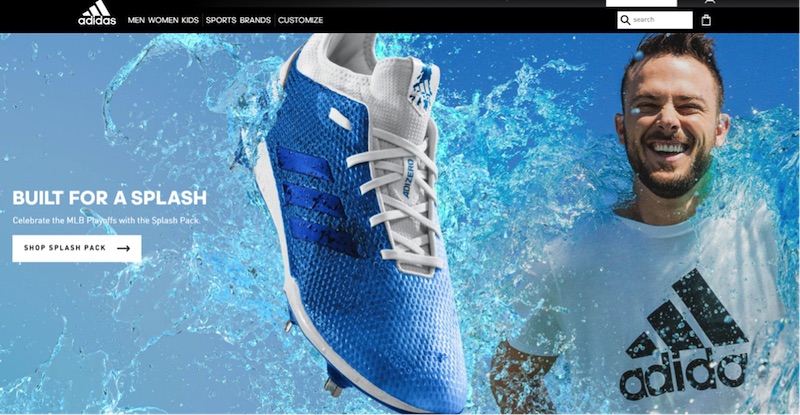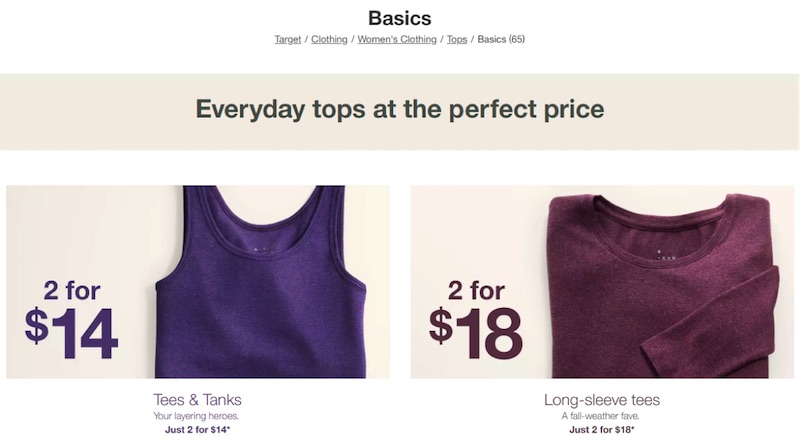The concept of a customer journey can serve as a practical guide for ecommerce merchants who want to grow their businesses. It tells them where to invest their marketing efforts, what products they need, and how to close the deal within the multi-device and multi-click patterns that shoppers take today before they buy.
Through my experiences with hundreds of brands, I have seen how the customer journey impacts conversion. Improving the customer journey — from the first touch of a prospect to a repeat purchase from a brand ambassador — keeps people coming back.
In this post, I’ll address four customer-journey elements that impact ecommerce conversions.
Improving the customer journey … keeps people coming back.
Audience Personas
One of the most important steps your ecommerce company can take to improve conversions is to develop in-depth buyer personas. Some companies write entire books about the people who buy from them — each department can understand whom they are selling to and what the buyer’s motivation is.
Modern buyer personas don’t just look at basic demographics and spending habits. Modern personas also consider the uses of the products, the needs of consumers, and their general buying cycle. Even if two personas are similar, one key characteristic could change how you market to them.
Consider the market for running shoes, for example. Adidas likely has two types of customers: Fashion-forward consumers who are willing to pay hundreds of dollars for celebrity-designed sneakers, and athletes and outdoor enthusiasts who need durable shoes that will last.

Adidas likely has two types of customers: fashion-forward consumers and outdoor enthusiasts.
In the first case, the shoes are a fashion statement. The customer may pay a few hundred dollars, but the shoes will have minimal wear and tear from use. This customer may enter the sales process again after, say, a new shoe release.
Meanwhile, athletes and outdoor enthusiasts may also spend a few hundred dollars on shoes. But they expect the shoes to last for years — through hours of practice and games. These customers are less likely to purchase shoes again in the near future.
This is where detailed buyer personas come in. If Adidas sorts customers only by price point, it might put these two audiences in the same group. However, their behavior is entirely different. Marketing to one group with a message that appeals to the other will result in flat sales.
Sales Predictions
If merchants could easily predict what their shoppers wanted, every ecommerce business would be a smashing success. Instead, some brands sell out of products in a few hours — limiting sales potential. Others are desperate to move excess inventory with clearance sections, dramatic sales, and steep coupons.
The data related to inventory management is staggering. More than 40 percent of retailers list inventory management as their biggest problem. Forty-three percent of small businesses don’t manage inventory at all. This is shocking considering 70 percent of consumers would buy from a competitor rather than wait for an out-of-stock item on backorder.
Mapping the customer journey and understanding your target customers can help your brand choose items that will appeal to shoppers and increase the chances that your inventory meets their needs.
Two companies that do this successfully are Target and J.C. Penney. They sell average quality t-shirts to consumers at reasonable prices — typically around $10. These companies always keep a selection of t-shirts in stock in a variety of colors. They know that their shoppers will reach for a few basics when they’re in the store, often as an impulse buy or add-on. Within a few months, the t-shirts will presumably be worn out, and customers will likely replace them.
These retailers know what their customers want (affordable basics) and can predict when the customers will restock. This makes mapping the customer journey more clear and helps with inventory management.

Target’s Basics are inexpensive, prompting impulse buys and enabling the company to predict when shoppers will restock.
Mid-journey Marketing
Once you have a clear understanding of your buyers, their needs, and what kind of inventory they expect, turn to your mid-journey efforts. See how your target customers engage with your brand and what brings them to your ecommerce site.
Most ecommerce marketers focus on the top and bottom of the sales funnel. They create content that, hopefully, goes viral and gets in front of thousands of people for top-funnel exposure. Then they try to convert those customers immediately. In that scenario, there is no real journey, and customers are often left confused about the brand and the offer.
Through customer-journey mapping, you can understand what your prospects need before they convert. What information is lacking in your marketing efforts that drives away leads? Where are consumers getting lost between the awareness and purchase stages? Once you can answer these questions, you can develop a more robust marketing experience that drives sales and fills in the gaps.
Gate 1 Travel, a Pennsylvania-based tour operator, knows that its target customers rarely make impulse buys. Consumers might buy a $10 t-shirt on a whim. But few spend $2,000 on a 10-day tour without careful consideration.
Gate 1 has a persistent email strategy. The recipients are mid-funnel prospects because they are engaging with the brand, but they have yet to convert.
Gate 1 sends deals daily for a variety of destinations, increasing the likelihood of recipients finding some corner of the world to visit. Plus, recipients have long windows to redeem the discounts — usually a week or two — and the discount is valid for a year’s worth of tours. These efforts slowly wear down people in the middle of the funnel until they buy.

Gate 1 Travel’s email strategy is focused on mid-funnel prospects, those that have engaged with the company but have yet to convert.
Changing Buyer Behavior
The final step in using the customer journey to increase conversions is to change how consumers shop with your brand.
- Adidas brings customers back with new releases, highlighting shoes that utilize new technology and those designed and endorsed by celebrities.
- Target is effective at convincing shoppers who initially wanted just one product to buy multiple selections. Customers leave the website with more items because of Target’s low free-shipping thresholds. A $35 2-day shipping offer convinces more people to convert while increasing the average ticket to reach that level.
- Gate 1 Travel knows that its target customers embrace travel. It can promote poor-selling destinations through strategic email promotions that tap into audience wanderlust.
Because these companies understand their audience, make top inventory selections, and have a strong marketing strategy, they can use the customer journey to increase conversions and grow sales.